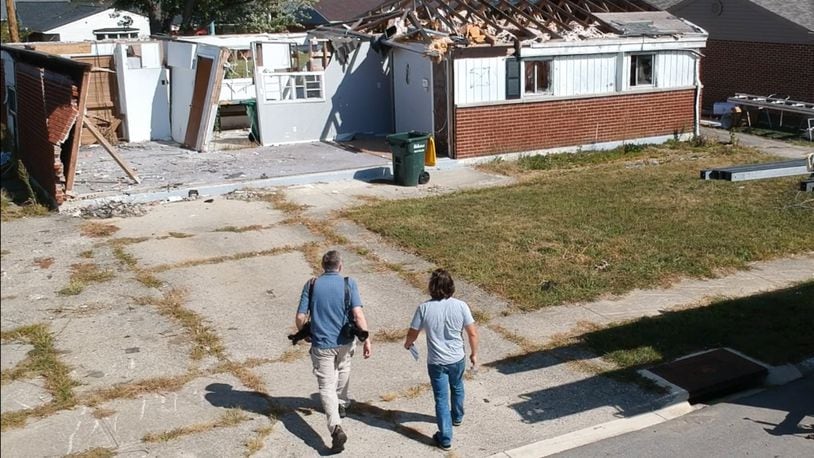Since the morning after the Memorial Day tornadoes ravaged our region, it has been neighbors, nonprofits, church groups and businesses leading the rebuilding effort.
Many people supported this work by buying Dayton Strong T-shirts or making donations to the Dayton Foundation’s tornado relief fund.
Now five months later as rebuilding is far from over, many people are asking: What’s being done today? How are those donated funds being used?
On the latest episode of our Walking the Path of the Storm podcast, Dayton Daily News reporters Josh Sweigart and Chris Stewart sit down with officials leading volunteer recovery efforts, including the Dayton Foundation, to answer these questions.
LISTEN HERE:
In the interview, Dayton Foundation officials said the community has contributed about $1.8 million to the fund. About $800,000 of that was used in the immediate aftermath of the storm to support disaster recovery efforts through groups like the Red Cross.
Podcast Part 2: Tornado podcast focuses on neighborhood where two-thirds of homes mangled
The Dayton Foundation contributed $180,000 to help get a $720,000 grant to pay for someone to coordinate community-wide recovery efforts. That process is expected to last five to 10 years.
The rest of the funding is supporting a consortium of nonprofits organized to help individuals with recovery assistance.
The individual recovery process goes as follows:
1. A tornado survivor needing help calls the United Way helpline at 211.
2. After they are screened, callers are assigned a case manager. The group is still hiring case managers, with financial support from the Dayton Foundation.
3. Case managers help identify governmental and non-governmental programs available to assist the person.
4. If there is a gap between what’s needed and what’s available, the issue is referred to what’s called a “resource table.” There, groups including the Dayton Foundation discuss whether they can pitch in additional resource to fill that gap.
Here’s a breakdown of the community and individual recovery groups:
The individual recovery effort could take up to three years.
The Dayton Daily News is asking those affected by the storm to fill out a survey to assess its lasting impacts, and what survivors need for short-term and long-term recovery. Find the survey on our website at DaytonDailyNews.com/tornadosurvey.
